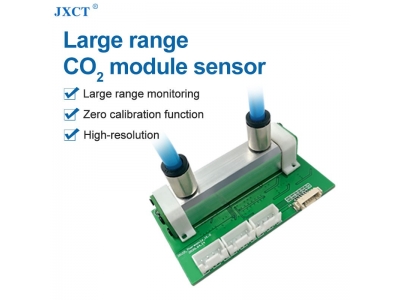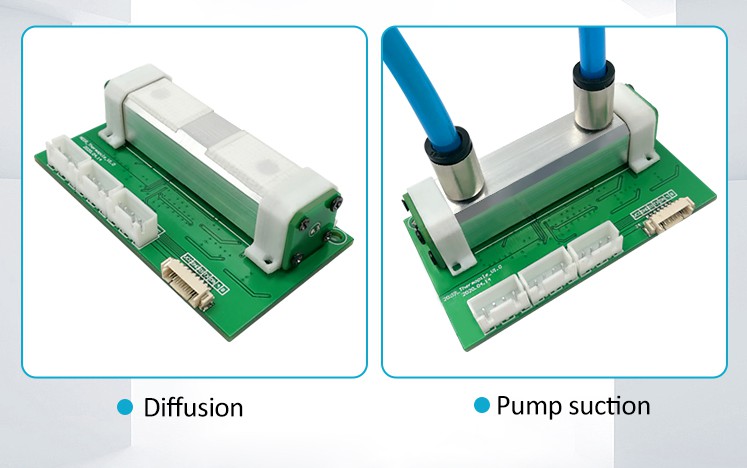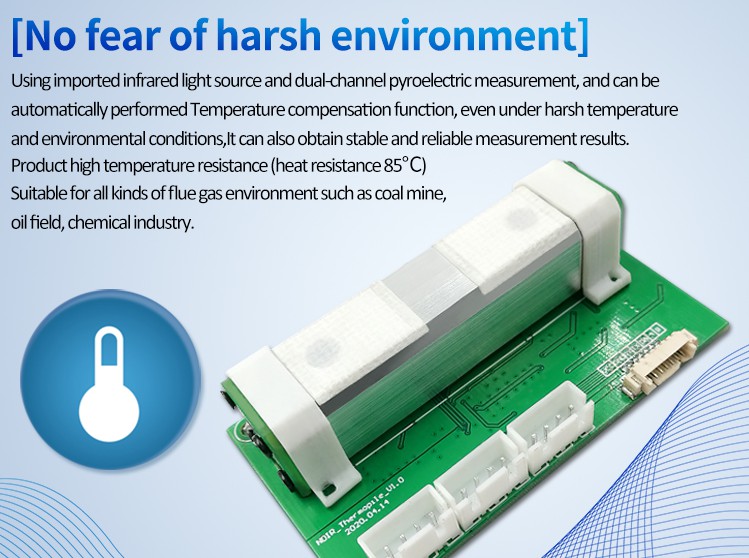
How Does The NDIR CO2 Sensor Work?
An NDIR CO2 sensor detects and monitors carbon dioxide in the air based on the absorption of infrared (IR) light at a given wavelength.

An NDIR CO2 sensor detects and monitors carbon dioxide in the air based on the absorption of infrared (IR) light at a given wavelength.
An NDIR CO2 sensor detects and monitors carbon dioxide in the air based on the absorption of infrared (IR) light at a given wavelength. An infrared lamp guides light waves through a tube to a filter. The amount of infrared light passing through the filter is measured by an infrared light detector.
Carbon dioxide (CO2) is a colorless, odorless gas formed during combustion, breathing, and organic decomposition. Measuring carbon dioxide is important in a variety of industries and applications, from measuring indoor air quality to industrial beer brewing.
Nondispersive infrared (NDIR) gas sensors are commonly used to detect and monitor CO2 in the air, also known as NDIR detection.

Every element on our planet can absorb certain types of light. For example, grass reflects green light and absorbs all the others (red, orange, yellow, blue, indigo, and violet) which is why our eyes see that grass is green. NDIR sensors are able to pinpoint atoms and molecules that we cannot see, making them extremely useful in detecting CO2 levels.
As a whole, NDIR CO2 sensors detect and monitor CO2 (usually in the air) based on the absorption of infrared (IR) light at a given wavelength.
An NDIR CO2 sensor consists of an IR source, a light tube, a filter, and an IR light detector. The IR lamp directs light waves through the light tube (filled with air) where the gas is pumped or diffused towards the filter.

The amount of IR light that passes the filter is measured by the IR light detector which is then converted into an electrical output measurement.
When detecting CO2, the most commonly used wavelength is 4.26 µm (microns). This wavelength is not absorbed by other gases or water vapor, therefore cross-sensitivities and interference by humidity are reduced. I suppose you could say it is much like a fingerprint. Just like a fingerprint, the wavelength to detect the CO2 molecule in the NDIR sensor is unique.
When using an NDIR CO2 sensor, the more light that is absorbed, the higher the CO2 concentration measured will be. This is because more gas molecules result in a lower output signal.

The performance of an NDIR CO2 sensor depends on the light emitter and infrared sensor that is installed, which comes in two types seen below.
Infrared light emitters can be split into two types: optical and thermal.
Optical emitters convert a current into light using electrons and holes inside a semiconductor. Recombination occurs when a voltage is applied to a light-emitting diode (LED), moving the electrons and holes inside a semiconductor.
LED optical light emitters respond very fast compared to thermal emitters, therefore they are widely used in NDIR CO2 sensors. They also consume less power and do not overheat because they convert a current directly into light.
Thermal emitters emit light by producing a current, heating the object. A filament in a lamp receives a current, generating heat. This heats the filament and emits light due to an increase in temperature. This type is an old-fashioned IR light emitter, yet it is still very useful for CO2 gas sensors.
Infrared light sensors can also be split into optical and thermal types.
Optical IR sensors (photodiode) use photovoltaic power in a semiconductor to convert light into a current.
A thermal IR sensor detects a voltage (or polarization) when a temperature change occurs from a warming object. Thermal IR sensors include thermopile and pyroelectric sensors.